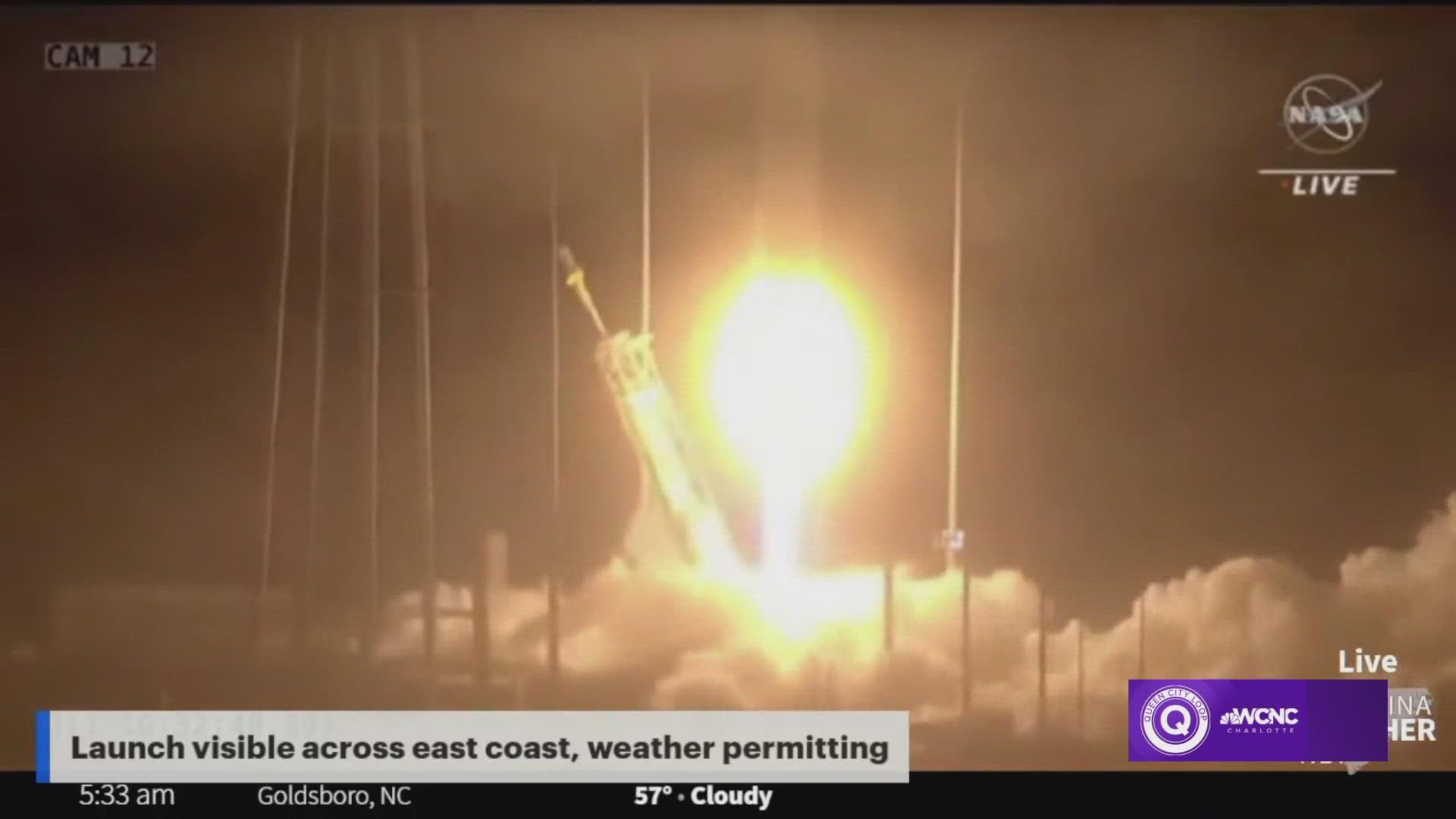WALLOPS ISLAND, Va. — When Northrop Grumman and NASA launched a rocket Monday from Wallops, Virginia, the burst of light and trailing vapor cloud could be seen across the morning sky along the east coast.
Where clouds and fog didn't obscure the view, the vapor trail of the rocket could be seen.
The Antares rocket with Cygnus cargo spacecraft the "S.S. Sally Ride" aboard lifted off from Pad-0A at NASA’s Wallops Flight Facility on Virginia’s Eastern Shore at 5:32 a.m. EST this morning.
This is Northrop Grumman’s 18th contracted resupply mission to the International Space Station. The mission is carrying supplies, including scientific experiments, to the ISS.
This Cygnus, dubbed the S.S. Sally Ride, is scheduled to arrive at the space station on Wednesday, Nov. 9.
Given the launch location and hour of the day, the rising sun to the east cast the light needed to see the rocket and vapor trail in the sky.
While the views were blocked in portions of the Carolinas by fogs and clouds elsewhere across the Carolinas there was a sight to be seen in the sky, including over Charleston, South Carolina:
The rocket could also be seen over La Grange, North Carolina:
Another person sent WCNC Charlotte Chief Meteorologist Brad Panovich this photo from Wilmington, North Carolina:
The Cygnus cargo craft Monday was delayed from Sunday when a fire alarm at the mission control center prompted a scrub.
RELATED: What is a 'scrub'
The rocket launch Monday was the start of a busy science schedule for space fans. A lunar eclipse will transform the early morning sky around 4 and 5 a.m. EST Tuesday morning.
While not visible in the Carolina sky, a new weather site called JPSS-2 will launch Thursday -- and NASA hopes to launch Artemis-1, their uncrewed, test flight back to the moon, at 12:07 a.m. on Monday, Nov. 14.

